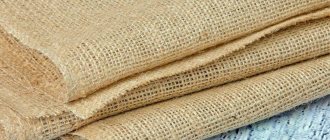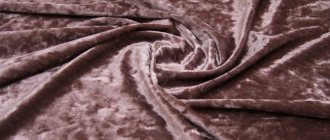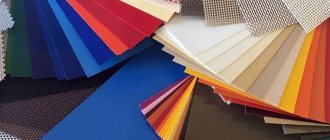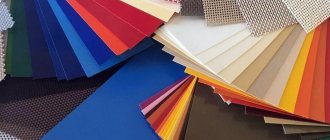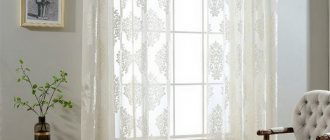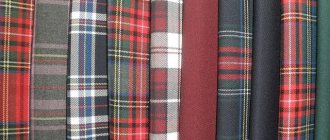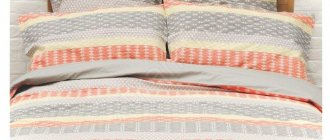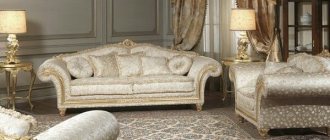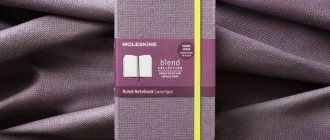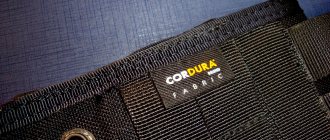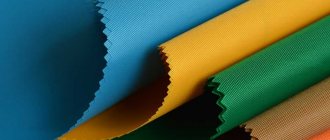Home / Natural fabrics
Back
Published: 01/25/2021
Reading time: 2 min
0
95
Matting is a durable, dense fabric with a smooth or slightly fleecy surface. It differs from other materials in its specific pattern, reminiscent of a chessboard. Different types of matting differ in composition and scope of application. It is used to make clothes, home textiles, accessories, etc. This fabric looks stylish, is practical and does not cause problems with care.
- 1 Description
- 2 Composition and preparation of fabric
- 3 Material properties
- 4 Application
- 5 Recommendations for care and use
- 6 Conclusion
Description
Matting is a type of chenille fabric. It consists of a complex interweaving of threads that form a convex structure; it can be seen in the photo. Outwardly, it is similar to burlap with a clear weave of threads.
The material looks rough, but if you run your hand over its surface, you feel that it is soft and silky. This fabric has gained popularity and is widely used due to its rough texture.
Previously, the material for matting was the cattail plant. The rough linen could be used to make a durable bag or various floor coverings.
Later, soaked linden bast was used as fiber for matting. The fabric production process was long and very labor intensive. After the advent of looms, this manufacturing technology began to become obsolete. Then it became much easier to produce canvas with a convex relief. Later, linen, hemp, wool, and cotton threads became the raw materials for matting. Modern matting is often supplemented with synthetic fibers.
This is interesting. The first famous designer who saw beauty in matting was Coco Chanel. She introduced dresses and suits made from this fabric into fashion.
The fabric density ranges from medium to high. More often, monochromatic canvases are found on sale. Products made from printed patterns look original.
Composition and preparation of fabric
Matting is created using plain weave (double or triple). It intersects the warp and weft threads, which form textured squares placed in a checkerboard pattern.
For your information. The linen method of weaving threads is used to create burlap. But matting differs from it in composition.
There are these types of matting depending on the composition:
| View | Characteristic |
| Natural | Based on cotton or linen fibers. The composition can be supplemented with wool or silk threads. After weaving with selected raw materials, the finished fabric is treated with various compounds, dyed, and dried. The result is a smooth, silky, pleasant to the touch fabric. Wool makes it denser, warmer, fleecy |
| Synthetic | Acrylic and polyester threads are used to make the fabric. The result is a dense, wear-resistant, durable material that looks attractive. However, it is not pleasant to the touch |
| Mixed | This type of fabric is the most popular, as it combines the best properties of natural and synthetic materials. It has a high tactile appeal, but at the same time becomes elastic, wear-resistant, durable, dense |
You need to choose fabric taking into account the scope of application: natural or mixed varieties are more suitable for sewing clothes, and synthetics are more suitable for household needs.
What is a matting today?
Products made from matting on the modern domestic market are far from new and not in short supply. It is quite popular and is in great demand among consumers. The external characteristics of the material do not always meet our needs, since matting is a bit like classic burlap due to its strength and rigidity. Unlike burlap, this material is considered environmentally friendly and even noble.
This upholstery fabric is made mainly from natural elements such as linen, cotton and even natural wool. As everyone knows, all natural fabrics are very sensitive to external influences and can quickly deteriorate due to direct sunlight. It is to ensure strength and stability that acrylic and polyester are added to the fabric composition.
Many people mistakenly believe that matting is intended exclusively for curtains, sofas and tablecloths. In fact, everything is completely wrong. The fabric is still used to this day for sewing outerwear, making blankets and other bedding. Based on this material, a whole range of different fabrics are created, such as flock fabric on matting.
It is a mistake to assume that upholstery material of this kind goes well only in wooden interiors, where a lot of decorative elements are used. Matting curtain fabrics look good in Scandinavian design styles in light colors, in the Art Nouveau and even Provence styles.
Due to the fact that the main part of the material is linen, you can be sure of its good quality and purity. Even if there is a child living in the house, you don’t have to worry that the stuffed matting will cause irritation and other side effects in the form of skin diseases.
In addition, experts classify such a canvas as a blackout, and in simple terms, it is a material that does not transmit sunlight. That is why matting is often used for sewing curtains and curtains for a variety of rooms.
The description may give us the idea that this is a very prickly and hard fabric that is almost impossible to wear on the body. In fact, linen in combination with silk and cotton creates a material that is amazing to the touch, which has not only a silky shine, but also a pleasant smoothness. Therefore, there is no need to refuse a high-quality blackout matting just because you are not confident in its tactile properties.
Material properties
It is impossible not to note the positive properties of matting:
- Aesthetic appearance, recognizable texture, excellent combination with other fabrics and decorative elements.
- Durable, resistant to tearing and abrasion.
- It allows air to pass through, as it often consists of a natural base.
- Wide selection of colors and patterns.
- The material practically does not wrinkle or deform.
- The fabric does not attract dust and retains dirt on the surface, so it is easy to remove stains.
- It has antibacterial properties, the products do not harbor moths, and they do not absorb odors.
Mixed fabrics have the best properties.
Rogozha has the following disadvantages:
Author:
Anastasia Kukushkina
I hope you enjoy the article I have prepared for you! If you find errors in it, write to me about it! I will answer any questions you have, ask them!
